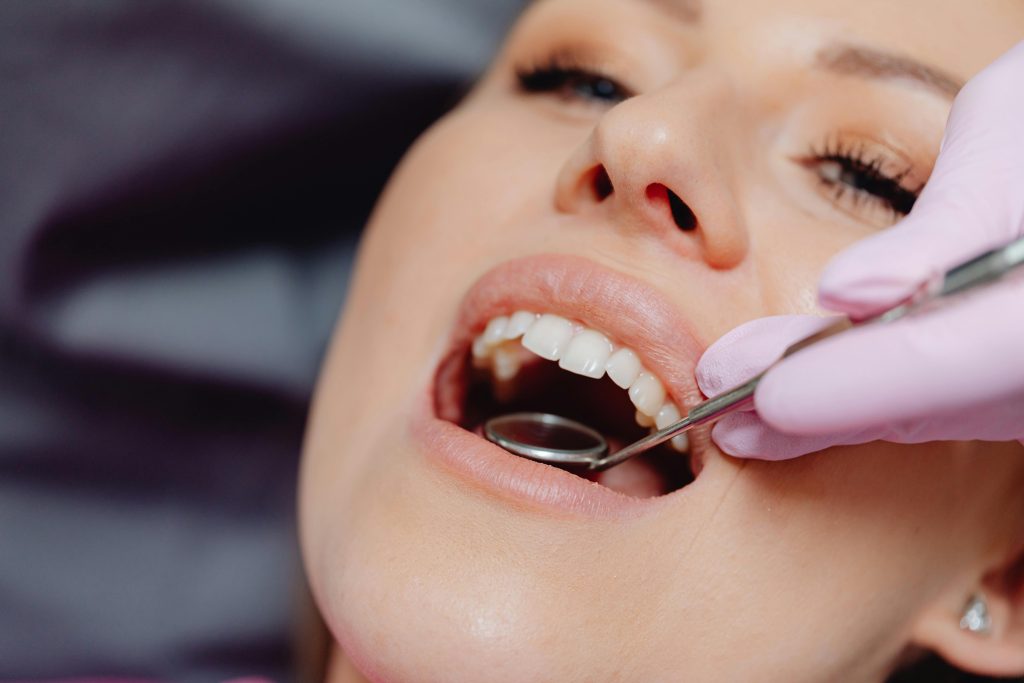We will do our best to keep your natural teeth where possible. However, there may be some instances where a tooth needs to be extracted.
Not sure what to expect after having a tooth removed? The first night can feel a little uncertain, especially if it’s your first extraction. At Kamran Rasul – The Dental Clinic, we understand that recovery is just as important as the procedure itself. That’s why we’re here to reassure you – a little soreness or swelling is completely normal, and we’ll guide you through everything you need to know.
For a full breakdown of what to expect during your first night post-extraction and how to take care of your mouth, read our detailed blog here.

A tooth extraction is necessary in some of the following scenarios:
A knocked out or dislodged tooth
Teeth are frequently dislodged or lost due to trauma. A knocked out tooth is where a tooth has been removed from its socket entirely, and you won’t likely need an extraction unless some parts of the tooth remain in place. A dislodged tooth can also occur due to trauma. This is where the tooth has not fully been removed from the socket.
Impacted tooth
An impacted tooth is where the tooth cannot fully push through the gums and causes pain or discomfort.
Severe gum disease or decay
Periodontal disease is a serious issue and sometimes the tooth involved cannot be saved. In these cases, an extraction may be necessary.
Overcrowded teeth
Overcrowding in teeth is commonly picked up on during childhood when molars erupt, or adolescence once adult teeth come through. In adulthood, the eruption of wisdom teeth can also shift teeth and cause overcrowding. Overcrowded teeth can happen for several reasons, from genetics to habits such as thumb-sucking during infancy.
Overcrowding essentially occurs when the number (or size) of teeth does not match the size of the jaw. With overcrowding, we may need to extract teeth due to the resulting misalignment and so that other corrective orthodontic treatments such as braces can work effectively.
A tooth extraction should not be painful, as we use local anaesthetic to numb the area surrounding the extraction. This involves injecting a small amount of anaesthetic into the gum near the extraction site, numbing any pain. We will wait and check the area is numb before continuing with the procedure.
We understand that visiting the dentist to have a tooth taken out can be a stressful experience, and that some patients will be very uncomfortable during the procedure. If you are especially nervous about the appointment, please let us know beforehand. We do offer sedative options where required. Do keep in mind that after any form of sedation, you will need another person to drive you to and from the surgery – as well as take care of any dependants, or help you make any important decisions – for at least 24 hours.


Before we extract a tooth, we need to check the extraction is the best course of action for you and your dental health. To do this, we will take the following steps:
1. Appointment & Examination
Before any extraction can happen, we will need to thoroughly examine and assess your tooth and whether the extraction is necessary. This may involve x-rays being taken so we can see the inside of your tooth and the bones surrounding it.
2. Local Anaesthetic
If an extraction is necessary, we will give a local anaesthetic to numb the surrounding areas. If there are more complex needs surrounding the procedure, you may be offered an appointment at a later date with sedation or general anaesthetic.
3. Extraction
For a simple extraction, the procedure should last around 20 – 40 minutes. If there are complications, this could take longer.
4. Aftercare
Sometimes, we may need to use stitches to close the opening following an extraction. Where possible, these will be dissolvable so you won’t have to return to us for removal.
We will do our best to keep your natural teeth where possible. However, there may be some instances where a tooth needs to be extracted.
Our home whitening kits allow you to whiten your teeth in the comfort of your own home over the course of just a few weeks. We’ll custom make your whitening trays using a 3D scan of. your teeth. Each night for a number of weeks you’ll add your teeth whitening gel to the trays for sleeping in. After just a couple of weeks your teeth could be up to 16 shades brighter! Ask about teeth whitening at your next routine visit to Kamran Rasul – The Dental Clinic.

A tooth extraction is necessary in some of the following scenarios:
A knocked out or dislodged tooth
Teeth are frequently dislodged or lost due to trauma. A knocked out tooth is where a tooth has been removed from its socket entirely, and you won’t likely need an extraction unless some parts of the tooth remain in place. A dislodged tooth can also occur due to trauma. This is where the tooth has not fully been removed from the socket.
Impacted tooth
An impacted tooth is where the tooth cannot fully push through the gums and causes pain or discomfort.
Severe gum disease or decay
Periodontal disease is a serious issue and sometimes the tooth involved cannot be saved. In these cases, an extraction may be necessary.
Overcrowded teeth
Overcrowding in teeth is commonly picked up on during childhood when molars erupt, or adolescence once adult teeth come through. In adulthood, the eruption of wisdom teeth can also shift teeth and cause overcrowding. Overcrowded teeth can happen for several reasons, from genetics to habits such as thumb-sucking during infancy.
Overcrowding essentially occurs when the number (or size) of teeth does not match the size of the jaw. With overcrowding, we may need to extract teeth due to the resulting misalignment and so that other corrective orthodontic treatments such as braces can work effectively.

A tooth extraction should not be painful, as we use local anaesthetic to numb the area surrounding the extraction. This involves injecting a small amount of anaesthetic into the gum near the extraction site, numbing any pain. We will wait and check the area is numb before continuing with the procedure.
We understand that visiting the dentist to have a tooth taken out can be a stressful experience, and that some patients will be very uncomfortable during the procedure. If you are especially nervous about the appointment, please let us know beforehand. We do offer sedative options where required. Do keep in mind that after any form of sedation, you will need another person to drive you to and from the surgery – as well as take care of any dependants, or help you make any important decisions – for at least 24 hours.

Before we extract a tooth, we need to check the extraction is the best course of action for you and your dental health. To do this, we will take the following steps:
1. Appointment & Examination
Before any extraction can happen, we will need to thoroughly examine and assess your tooth and whether the extraction is necessary. This may involve x-rays being taken so we can see the inside of your tooth and the bones surrounding it.
2. Local Anaesthetic
If an extraction is necessary, we will give a local anaesthetic to numb the surrounding areas. If there are more complex needs surrounding the procedure, you may be offered an appointment at a later date with sedation or general anaesthetic.
3. Extraction
For a simple extraction, the procedure should last around 20 – 40 minutes. If there are complications, this could take longer.
4. Aftercare
Sometimes, we may need to use stitches to close the opening following an extraction. Where possible, these will be dissolvable so you won’t have to return to us for removal.